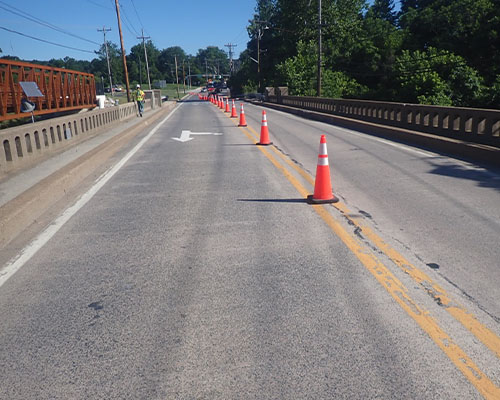Research Reports
Report Details
Abstract
 Existing bridge deterioration models rely on subjective national bridge inventory (NBI) condition ratings from visual inspections, which lack the objective assessments needed for informed repair and maintenance decisions. Non-destructive evaluation (NDE) tests, such as impact echo (IE), provide quantitative and objective condition evaluation data. However, these data have been underutilized for deterioration modeling due to data scarcity (one to three records per bridge). This report introduces a novel concept to put limited NDE data to more valuable use. Specifically, a Gaussian process regression (GPR) model is developed using IE records from the Long-Term Bridge Performance (LTBP) database. The GPR model offers two key advantages: it accurately predicts delamination for untested bridges (i.e., the bridges without IE records) with characteristics similar to those in the training data, and identifies bridges with high prediction uncertainty, enabling them to be prioritized for NDE testing to improve the model’s future delamination predictions. This approach enhances NDE inspection planning and resource allocation by focusing on the most uncertain structures for testing. Moving forward, the report identifies challenges and opportunities in the LTBP database, urging changes in current NDE data collection practices to support more strategic NDE applications, data reuse, and accurate deterioration modeling.
Existing bridge deterioration models rely on subjective national bridge inventory (NBI) condition ratings from visual inspections, which lack the objective assessments needed for informed repair and maintenance decisions. Non-destructive evaluation (NDE) tests, such as impact echo (IE), provide quantitative and objective condition evaluation data. However, these data have been underutilized for deterioration modeling due to data scarcity (one to three records per bridge). This report introduces a novel concept to put limited NDE data to more valuable use. Specifically, a Gaussian process regression (GPR) model is developed using IE records from the Long-Term Bridge Performance (LTBP) database. The GPR model offers two key advantages: it accurately predicts delamination for untested bridges (i.e., the bridges without IE records) with characteristics similar to those in the training data, and identifies bridges with high prediction uncertainty, enabling them to be prioritized for NDE testing to improve the model’s future delamination predictions. This approach enhances NDE inspection planning and resource allocation by focusing on the most uncertain structures for testing. Moving forward, the report identifies challenges and opportunities in the LTBP database, urging changes in current NDE data collection practices to support more strategic NDE applications, data reuse, and accurate deterioration modeling.
How to Cite
Elnahla, Mahmoud, Yanlin Guo, and Rebecca Atadero. Addressing the Feasibility of Employing NDE Data for Bridge Condition Assessment Using Gaussian Process Regression, MPC-25-579. North Dakota State University - Upper Great Plains Transportation Institute, Fargo: Mountain-Plains Consortium, 2025.